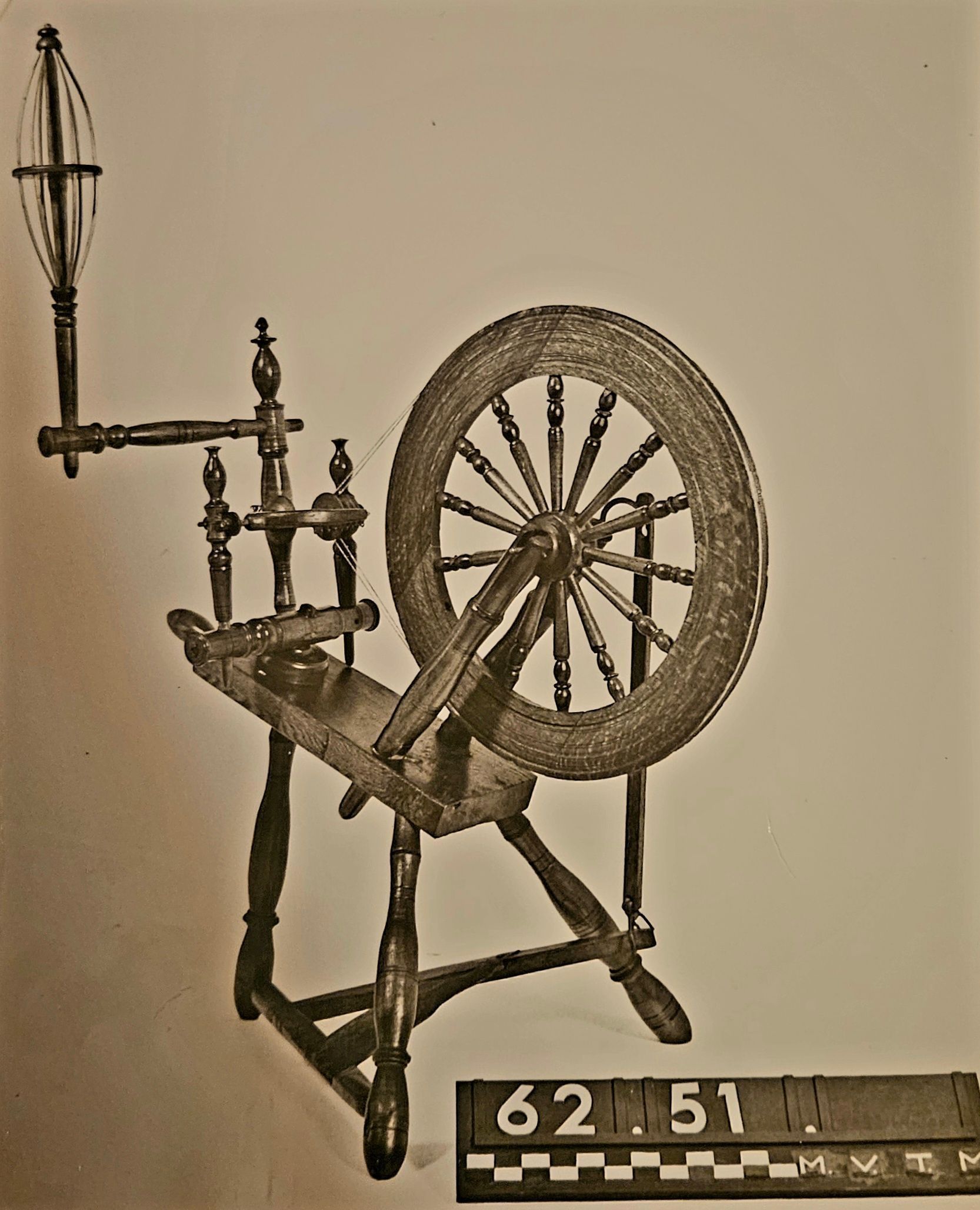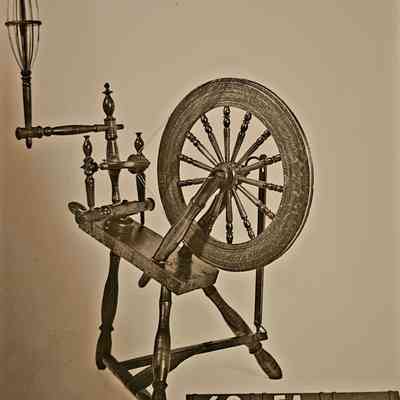Name/Title
Spinning Wheel, FlaxEntry/Object ID
2017.01.03Description
American Colonial flax spinning wheel. According to Blanche (Mrs. Walter) Eldridge of Jamaica Plain, MA, the person who donated it to the American Textile History Museum in 1962, it had been in the Hutchings family of Penobscot, ME, since 1764. Distaff assembly a replacement copied from a similar wheel in the Black House, Ellsworth, ME. The varnish is probably not the original. Constructed of oak, cherry, metal, and varnish. Features: Basket distaff held open by horizontal disc. So-called New England type, simple turnings.Use
Spinning flax into yarn or thread.Context
Preindustrial textile technology.Collection
American Textile History Museum CollectionMade/Created
Date made
1764Time Period
18th CenturyPlace
City
Penobscot, ME* Untyped Place
MaineContinent
North AmericaLexicon
Nomenclature 4.0
Nomenclature Primary Object Term
Wheel, SpinningNomenclature Sub-Class
Textile Manufacturing EquipmentNomenclature Class
Textileworking T&ENomenclature Category
Category 04: Tools & Equipment for MaterialsOther Names and Numbers
Other Numbers
Number Type
ATHMOther Number
1962.51.1Dimensions
Dimension Description
Length = longest horizontal (or warp); width = horizontal 90 degrees from length (or weft); height = verticalHeight
40 inWidth
21-1/2 inLength
32 inMaterial
Oak, Cherry, Metal, VarnishLocation
Location
Room
Dunham Hall Library Reading Room* Untyped Location
Main Museum BuildingCategory
ExhibitDate
March 25, 2025Condition
Overall Condition
GoodCondition Detail
Restored flyer, distaff assembly. New varnish applied at some point in time.Date Examined
Mar 24, 2025Provenance
Provenance Detail
In 1962 the object was donated to the American Textile History Museum by Mrs. Walter Eldridge of Jamaica Plain, MA. According to Eldridge, the wheel had been in the possession of the Hutchings family of Penobscot, ME, since 1764. In 2017, the ATHM donated the wheel to the Windham Textile and History Museum (the Mill Museum) when it closed. Eldridge also said, "When the wheel was received some parts were missing that these missing parts have been replaced by ones made from sketches of a flax wheel in the Black House Museum at Ellsworth, Maine." William Hutchings born in York, ME, 10/6/1764. Became a resident of Plantation #3 (Penobscot). Joined the Continental Army in 1781, aged 17. Died 5/2/1866, aged 101 years, 6 months, 26 days. Last survivor of Revolutionary War. William Hutchings begat Joel Hutchings, who begat Dorothy (Hutchings) Eldridge, who begat Walter H. Eldridge, donor and informant 1962.Created By
historian@millmuseum.orgCreate Date
March 25, 2025Updated By
historian@millmuseum.orgUpdate Date
April 4, 2025
